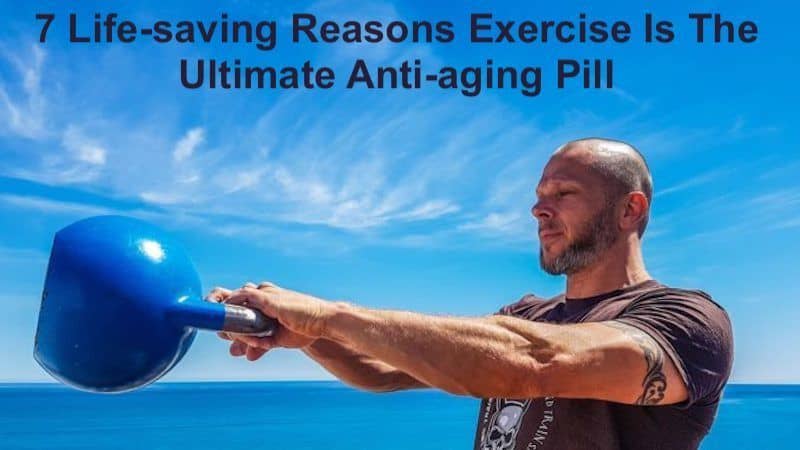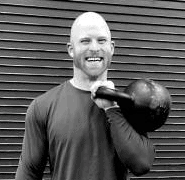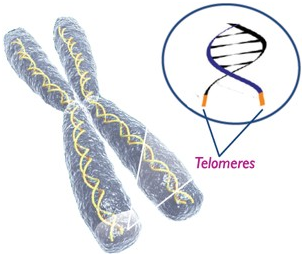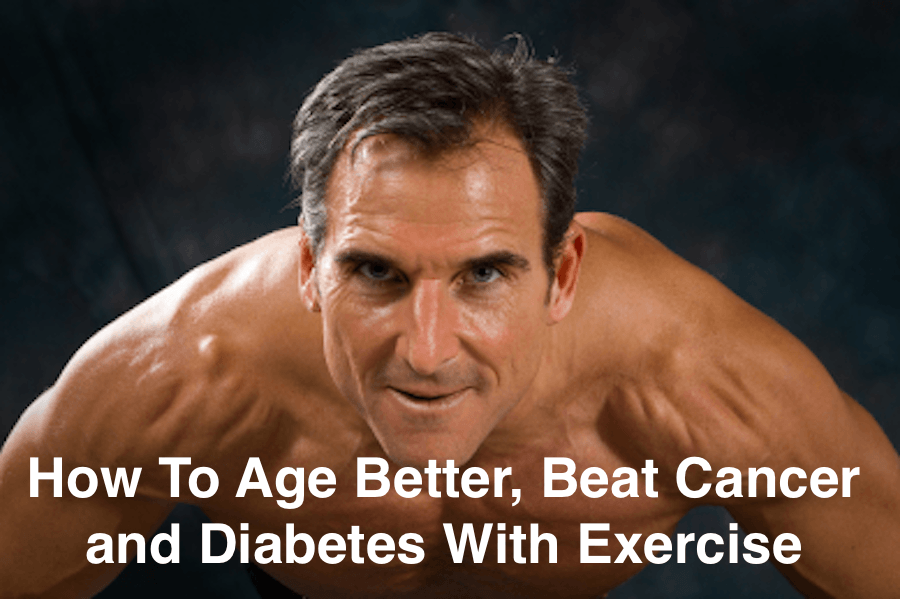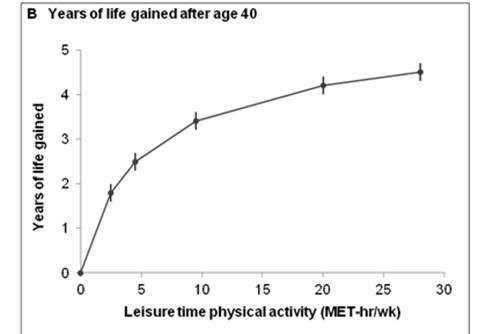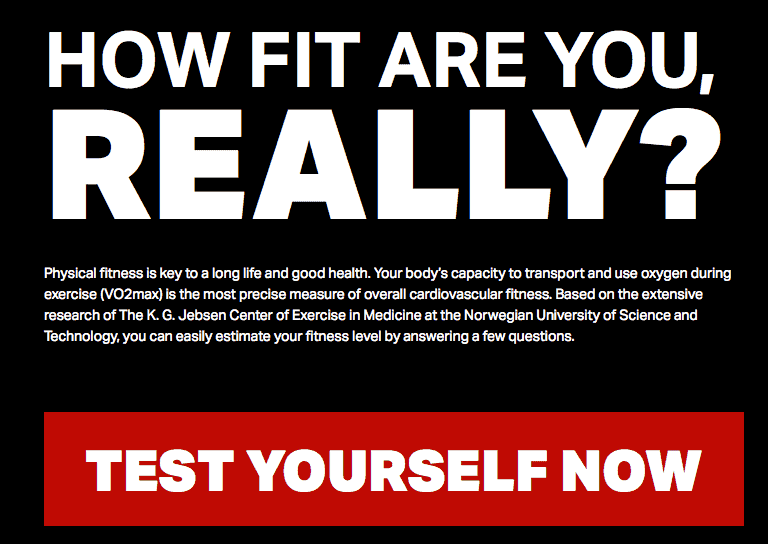7 Life-saving Reasons Exercise Is The Ultimate Anti-aging Pill
Everyone wants an anti-aging pill, but you already have access to it — exercise is the ultimate anti-aging pill, verified by science, as you’ll soon see. Thing is, you need both resistance training (weight lifting/calisthenics) and cardiovascular conditioning. Read and watch the video.
The scientific world is scrambling to develop an anti-aging pill, but you need not wait, because exercise is the ultimate anti-aging pill.
Get your anti-aging routine going simply by:
- Moving regularly
- Adding resistance
- Breathing hard here and there
You can do all this right now.
If you’re interested in slowing down the aging process, side-stepping the chronic diseases that beset the elderly and simply living with more vim and vigor, know that the research has been done, and the results tabulated:
Exercise is the ultimate anti-aging pill.
I was reminded of truth several times this past week as I kept bumping into online articles summarizing the findings of a recently published study that concluded:
“Doing lots of exercise in older age can prevent the immune system from declining and protect people against infections.”
Professor Norman Lazarus of King’s College London, who took part in and co-authored the research, said:
“If exercise was a pill, everyone would be taking it.”
Professor Lazarus is 82 years-young, and because of his bicycle riding has the immune system of a 20 year-old.

Professor Norman Lazarus — the guy in the bike shorts
Two other notable findings from the study of elderly bicyclists is that they had:
- Little to no loss of muscle or strength
- No increase in body fat
My suggestion is that you amend your lifestyle to model theirs, and that means — exercise!
In this article, we’ll cover 7 reasons exercise is the ultimate anti-aging pill, and more:
- Why muscle-building exercise helps you live longer;
- How exercise helps reduce your chances of getting cancer;
- How exercise helps you detox
- How exercise reduces inflammation;
- How exercise improves cellular lifespan;
- How exercise boosts, klohto, a longevity hormone;
- How exercise reduces you chances of getting diabetes;
- “Burst Training” (HIIT) you can do to live long and strong;
- The minimal amount of exercise that prolongs life; and
- An online test to measure your fitness.
Let’s dig in…
You Were Made To Move
In his article, The Anywhere, Anytime Program for Lifelong Fitness, strength and conditioning coach Shane Trotter exclaims:
“Exercise is part of your humanity. It’s deeply rooted in your biology as an assumed part of existence, prerequisite to emotional and cognitive function. You were made to move, and are not whole without consistent movement.
“Exercise, fitness, and health magnify every other area of your life. You will have more energy for your work, more excitement and purpose in your projects, and more levity and humor in your interpersonal relationships. You will be a role model for the people you love. With the right plan, you’ll start to see the world in a completely different way.”
So, then, what’s the right exercise plan for you?
The Answer — It’s the exercise routine that:
- You’re willing to do most every day;
- Involves resistance training for both your upper and lower muscles; and
- Has a cardiovascular exercise component.
Here’s how the World Health Organization puts it:
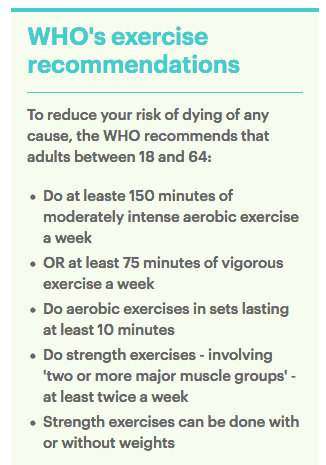
Exercise is the ultimate anti-aging pill.
Exercise that combines resistance and cardio training:
- Builds muscle, which helps you live longer, stronger
- Reduces your chances of getting cancer (by as much as 30%)
- Reduces your chances of getting diabetes (by as much as 60%)
- Reduces inflammation, a primary promoter of chronic disease
- Increases your body’s innate detoxification capacity
- Increases cellular lifespan
Let’s take a look at the research behind each of the claims made above, and then dive into some specific suggestions about what sort of exercise (and exercise programs) will make your life long and strong.
We begin with the seven life-saving reasons exercise is the ultimate anti-aging pill.
#1 Muscle-building Exercise Enables You To Live Longer
Yes, unsurprisingly, exercise can build muscle, if it involves sufficient resistance. But what’s the longevity angle here?
As I delved into here, as we age, muscle tends to either wither away or turns to fat. This muscle loss (called “sarcopenia”) is not just a side effect, but also a significant cause of disease and frailty, the inevitable companions of aging.
Insufficient muscle contributes to imbalance and falling, metabolic dysfunction, cognitive decline, hormonal imbalances and more.
You need not pack on so much muscle that people will trot up to you and say,
“Hey Mr. Björnsson, love you in Game of Thrones”.
What you want is enough muscle to make you functionally fit, and that means having sufficient muscle — and the corresponding strength it enables — to move, push and pull your body weight.
From a life extension, health perspective, you don’t need to do 10 chin ups, but one should be doable. You don’t need to do 20 push ups, but women should be able to do a couple, and men, 10. And you don’t need to be able to run a mile in six minutes, but how about being able to walk up a mile-long hill in 15 to 18 minutes?
If you could care less about moving your body around because your car does that well enough, consider that muscle can also keep you alive.
Living is useful, yes?
As we age, muscle fibers begin to perform less ably and we lose muscle mass, leading to unhappy consequences unless we do resistance training type exercises, particularly the high intensity interval training (“HIIT”) shown in the video below.
Wayne Westcott, Ph.D., professor of exercise science at Quincy College, researcher, and author of more than 20 books on strength training, explains it thus:
As men age, they can lose five to seven pounds of muscle mass every 10 years starting in their 30s, and more as they approach their 50s. They also gain about 10 pounds over the same time frame.
Now, some math: If you go down five pounds or so in muscle, but up 10 pounds overall— that’s 15-plus pounds of fat gained each decade.
So, how many decades older than 30 are you, and how many pounds are you overweight?
If You Fall, Will You Bounce Back Up? 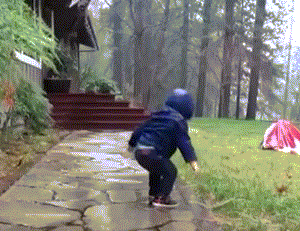
One of the most common real-life examples of insufficient muscle among the elderly is falling and breaking some bone, which then speeds them to infirmary, even death.
Yes, there’s a direct relationship between muscle mass and falling in the elderly. Older people who fall and break a bone and are thereby bedridden for weeks will lose even more muscle and bone mass, which helps explain why 33% of people who fracture their hip in the UK die within 12 months. (1)
This is a situation that is so dire that according to WebMD, 80% of women surveyed would rather be dead than in a nursing home as a result of falling and breaking a hip. (1)
In this article, I point out that if you live long enough it’s nearly certain that your health will become significantly compromised by some chronic illness, but the chances of this dolorous outcome can be dramatically reduced by exercise.
As the CEO of the longevity research center, Buck Institute, Dr. Eric Verdin says:
“Exercise is an incredible anti-aging medicine. People who exercise regularly live healthier and longer than people who don’t.”
Dr. Verdin adds that adopting anti-aging protocols is a worthwhile pursuit, because:
“Aging is the major risk factor for all of these [chronic] diseases”.
Nothing Replaces Activity and Movement
If you had to squeeze the conclusions of a recent British study into a nutshell, it would be anti-aging medical expert Dr. Ronald Klatz’s statement about anti-aging efforts:
“Nothing replaces activity and movement.” (2)
In this case, the health of 3,500 British men was evaluated for 20 years. Here’s a summary of the findings:
- Those who were physically active in mid-life were nearly three times more likely to be active at the end of the study period.
- Those who played sports in mid-life were more likely to be active in old age than those who did other types of physical activity in mid-life.
- Men who played sports for 25 years or more were nearly five times more likely to be physically active in old age than those who didn’t play sports.
The authors of the study explained it this way:
“One possibility is that people’s enjoyment of sport may be more likely to persist into old age than preferences for other types of activity.”
Yes, for those of you can’t simply can not fathom the nature of a “gym rat”, find the sport you can enjoy enough to do for the rest of your life, such as bicycling, as I touched on in the beginning of this blog post.
#2 Exercise Reduces Your Chances of Getting Cancer
Every intensive exercise session kills cancer cells!
Sports scientists at the University of Copenhagen performed experiments with blood samples taken from women who were being treated for breast cancer.
The women did an intensive training session that included strength and cardio training once a week over a six-month period.
This is what they found:
“Every time you do intensive exercise, your body produces substances that kill cancer cells. The effect of a single session is limited, but the effect of a lifestyle that has included intensive exercise several times a week for years on end is probably considerable.” (3)
Strong Muscles Protect Against Cancer
More than 10,000 men were studied over the course of 25-plus years.
The bottom line:
Men who could shift heavier weights with bench presses and leg presses were less likely to die from cancer. (4)
Yes, this was an all-men study, but the conclusions are pertinent to women. The notion that women need to lift weights differently than men or they’ll bulk up is nonsense.
Muscle is muscle in both genders, the primary difference being the amount of testosterone in men and women, which is largely why men can grow more muscle mass than women.
In any event, Researchers at the University of South Carolina found the following is relevant to both genders:
- If you have average or high muscular strength your chance of developing cancer is 30% lower than if your strength level is low.
- Muscle strength reduces the chance of developing a fatal form of cancer regardless of your body weight.
- Best of all is being fit and strong: if you’re not fit, the protective effect of your muscular strength is less.
- Promoting regular resistance training involving the major muscle groups of the upper and lower extremities at least two days per week can reduce cancer mortality death rates.
- Resistance and aerobic exercise should complement each other.
Other researchers are supporting the findings of the South Carolina study.
According to new research out of University of Sydney, strength-based workouts may be just as important as aerobic ones.
The study, published in the Journal of Epidemiology, looked at the exercise habits of over 80,000 individuals over time. Here’s what they discovered about people who performed strength-based training:
- They had a 23% reduction in risk of premature death by any means; and
- They were 31% reduction of cancer-related death. (Interestingly, aerobic exercise had almost no impact on cancer death rates.)
If I asked you to name some people you know who have died prematurely of natural causes, you might be stumped. But if I asked if you know (or knew) people with cancer, you’d be nodding, sadly, yes.
The National Cancer Institute says that approximately 39% of men and women will be diagnosed with cancer of any type at some point during their lifetime, based on 2012-2014 data.
Look around… one of three people you see will get cancer.
It could even be you.
As I detail in Get Strong, Live Long and Beat Cancer, this is what you need to do:
- Increase your muscle mass to diminish the effect of sarcopenia (loss of muscle mass).
- Increase your muscle mass to increase your resting metabolic rate and tolerance to carbohydrates (meaning, less chance of getting fat by consuming them).
- Increase the resistance of the exercise (make it harder) as you get stronger in order to keep challenging your muscles and cardiovascular system.
I’ll end this section with some inspiration, least you think you’re too old to do resistance training.
This 84 year-young man is squatting with 330 pounds:
And, ladies, this is Ernestine Shepherd at 80 years-young:
{For more about Ernestine, read Four Masters Who Defy Age and Prove That You Can Too!}
#3 Exercise Let’s You Detox Better
Most people don’t do anything intentionally to aid their body’s natural detoxification mechanisms, and have no intention to do so, but if you regularly exercise you’re helping your body excrete its toxic load.
In Do These 2 Anti-aging Pills Really Work, I examined, among other things, the role cellular autophagy plays in aging and aging-related disease.
In the article, I quoted longevity expert Dr. James Watson’s explanation of what is Autophagy:
“Autophagy is like having a Pac man inside each of your cells that chases down, consumes and recycles dysfunctional organelles, proteins and protein aggregates.” (5)
Another longevity expert, Dr. Anna Maria Cuervo of the Albert Einstein College of Medicine, reviewed the genetic evidence in support of tight connections between autophagy, health span and aging.
She made these observations about autophagy and age-related disorders (6):
- The age-related decline in autophagic activity will affect normal cell function and contribute to different aspects of how aging manifests.
- Two neurodegenerative disorders of highest prevalence in our society — Alzheimer’s and Parkinson’s disease — are both late-onset disease that are coincident with the functional decline of the different autophagic pathways.
- By removing damaged organelles and reducing chromosome instability, autophagy acts in tumor suppression; therefore, when it decreases with age, accumulation of intracellular damage, dysfunctional organelles and chromosome aberrations increases the chances of cancerous cells forming and propagating.
- Different aspects of the gradual deterioration of the immune system with age could be related to autophagic dysfunction, particularly affecting dendritic cells, macrophages and B-cells.
- Defective autophagosome clearance in the aging muscle could contribute to muscle wasting (sarcopenia) characteristics of old organisms (like us).
What does this have to do with exercise, you ask?
Scientists found that the rate at which the mice were healthily demolishing their own cells drastically increased after they ran for 30 minutes on a treadmill. The rate continued increasing until they’d been running for 80 minutes.
Ah, but you’re not a mouse, I know. Humans are harder to study, and so finding out the exercise intensity and duration to reliably stimulate autophagy is tough to do. That said, one researcher in the mouse study was convinced enough by the results to buy his own treadmill.
Really, he did.
{Interested in detoxification? Read some of this}
#4 Exercise Reduces Inflammation
 It’s now common knowledge that inflammation plays a significant role in causing or aggravating many chronic diseases, and even the aging process itself.
It’s now common knowledge that inflammation plays a significant role in causing or aggravating many chronic diseases, and even the aging process itself.
There’s even a new term used to express the relationship between inflammation and aging, “inflammaging”.
Click here to read how inflammation is tied to chronic diseases associated with aging
From Inflammaging – the role of inflammation in the aging process:
Aging is associated with a number of chronic diseases – cardiovascular disease, diabetes, Alzheimer’s disease and other dementias, and cancer. They are all part of the process of immunosenescence.
The chronic inflammation that is a feature of the declining efficiency of geriatric immune systems has a deleterious effect on normal metabolic and hormonal signaling, is increased by the accumulation of cell debris as we age (for instance in the eye), and is typified by chronically elevated levels of circulating pro-inflammatory cytokines.
These processes are well reviewed in a recent paper in the journal Aging Mechanisms and Disease, titled “Macrophages in age-related chronic inflammatory diseases”, by Yumiko Oishi and Ichiro Manabe.
These chronic inflammatory processes, say the authors, tend not to be dramatic but are long-term, low-grade smouldering responses to things like tissue repair and insult by pathogens. And changes in the behavior of macrophages in particular, as we age, are central to driving inflammation.
Macrophages, they say, not only promote inflammation and tissue dysfunction but also are essential for resolution and healing of inflammation, as well as maintenance of tissue homeostasis. But, as we age, while macrophages turn on the inflammation that underlies healing processes and resistance to infection, they become less good at turning inflammation off when it has done its job.
Thus macrophages appear to contribute crucially to the paradoxical activation of basal chronic inflammatory states in the elderly and to the progression of age-associated diseases.
You can do a lot to reduce chronic inflammation by eating an anti-inflammation diet, like the one advocated by famed functional medicine doctor Andrew Weil. It’s also helpful to take supplements containing ingredients like curcumin, fish oil and various herbal compounds blended in a product called Zyflamed.
Not to mention, exercise!
Research shows that regular physical activity can reduce the inflammation in the body, and by so doing decrease your risk of developing related diseases and conditions—like heart disease, depression, decreased mental function, and loss of muscle mass.
Although other research has already shown that exercise has anti-inflammatory potential, a new study published in the journal Circulation followed people for 10 years to examine the long-term effects. They found that, in general, people who were more active at the start of the study, or exercised more by the end, had lower levels of inflammation.
You want a younger, healthier body? Reduce your inflammation.
#5 Exercise Improves Cellular Function and Lifespan
There are plenty of reasons to exercise, and in this article I’ve highlighted several, but the effect that regular activity may have on cellular aging could turn out to be the most profound.
Some years ago, Gretchen Reynolds wrote an article for the NY Times about a study that shows how exercising keeps your cells young. It was eye opening!
The scientists examined several groups of men and women of different stripes:
- The young and sedentary;
- The middle-aged and sedentary;
- Professional runners in their 20s; and
- Serious middle-aged runners.
The white blood cells were examined in all participants to determine telomere size.
Telomeres are tiny “caps” at the end of DNA strands, the length of which might predict lifespan. With each succeeding cell divison, a small portion of telomeres is “cut” away, leaving them shorter than before. (See my article, Three Months to Longer life.)
Those telomeres in the cells of both the active and slothful young adults were of similar size, which was unsurprising since none of them had been alive long enough for multiple cell divisions to have snipped away at their telomeres.
It was a different story for the middle-aged cohort.
When the researchers measured their telomeres they discovered that the sedentary older subjects had telomeres that were on average 40% shorter than in the sedentary young subjects.
This could be expected given that – all other things being equal – telomeres shorten with age. However, the middle-aged runners had remarkably youthful telomeres; only about 10% a bit shorter than those in the young runners!
Overall, telomere loss was reduced by approximately 75% in the aging runners, or as Dr. Werner, the lead researcher said:
‘‘[exercise] at the molecular level has an anti-aging effect.’’ (7)
{Interested in celluar health? Check out my article about autophagy and this one about “niagen”, a supplement that human trials show may improve lifespan.}
#6 Exercise Boosts Klohto
OK, that’s nice, but what’s “klohto”? 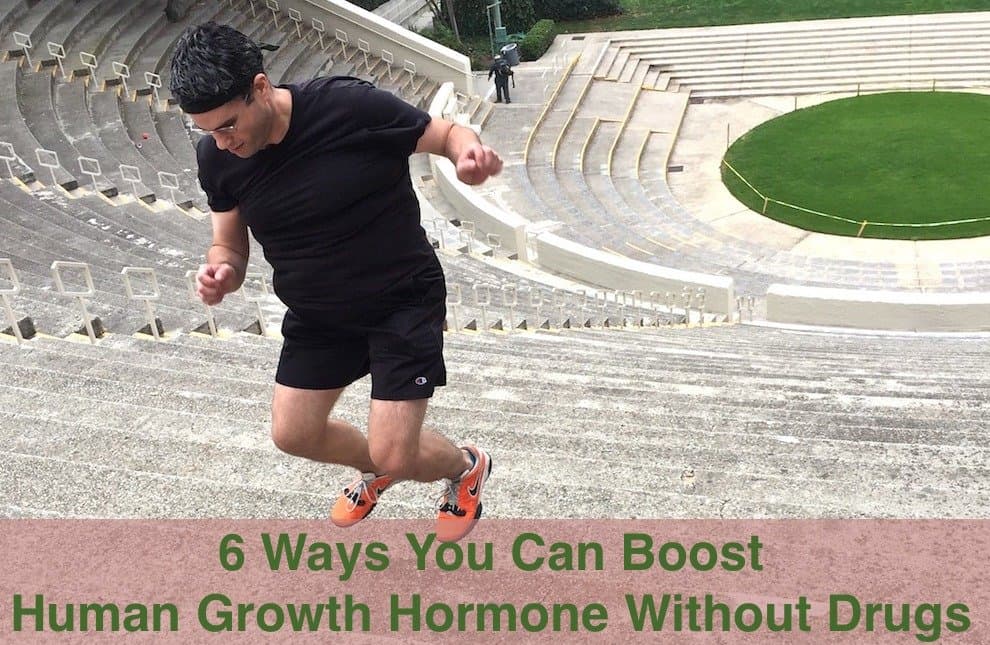
Klohto is a longevity hormone that delays aging, reduces age-related symptoms and helps us to stay fit and healthy in old age.
Researchers at the University of Pittsburgh report that physical exercise can help increase the amount of this hormone the body produces.Muscles produce klotho, and exercise speeds up the metabolic rate of muscle cells.
The relevant question here is:
Are active muscles capable of producing more klotho if they get more exercise?
To answer it, the University of Pittsburg researchers performed studies on both young and old mice and young and not-so-young women.
With mice, it was clear that “age attenuated” exercise intensity (meaning, younger mice exercise with more intensity than their older brethren), was directly correlated with the production of klotho.
But with the women, the results were more nuanced:
“These differences in training intensity may confound the age-related differences in the response of klotho to acute exercise, and further clinical studies are warranted.” (8)
Taken together, these findings in murine [mice] and human models suggest that exercise is a potent stimulus to increase plasma klotho levels, but that the response may be dependent on physical fitness level as well as age”, the researchers wrote. (8)
Interpretation:
- You must get the exercise intensity right to increase klotho, perhaps similarly to how high intensity interval training (HIIT) can boost Human Growth Hormone.
- Exercise intensity requires a baseline level of physical conditioning, so perhaps the klotho increase in the women studied were not as consistent as they were for the mice because the older women could not exercise with sufficient intensity.
#7 Exercise Reduces Your Chances of Getting Diabetes
Harvard University did a blood sugar/type 2 diabetes study. They found that combining strength training with an active lifestyle could reduce your chances of getting type 2 diabetes by a third or more, depending on what specifically you’re doing:
- You could reduce your chances of getting type 2 diabetes by a third with half an hour of strength training per day, or three 50-minute sessions per week.
- You could reduce your chances of getting type 2 diabetes by 60% if you add some aerobic conditioning to your strength-training regimen, such as cycling, swimming, jogging or even walking.
This is good news to people who don’t have access to a pool or bike, and have joint issues preventing them from jogging. Although such aerobic exercises can help prevent type 2 diabetes, all you need do to considerably lower your chances of getting it is strength training.
Don’t belong to the gym, nor have a set of weights?
Well, presuming you have a body, that’s all you need, as you’ll see in the next video.
Your Anti-aging Exercise
Now that you know the seven life-saving reasons exercise is the ultimate anti-aging pill, what are you going to do about it?
Assuming you’re willing to start exercising regularly, or already do, but clearly need to amp up your effort — they’re two fundamental things to do:
- Begin from where you are, and
- Choose an exercise regime that you’re willing to do consistently.
Don’t Leap Before You Can Walk
That phrase is apropos to the topic.
Say all you regularly do is sit around. Then you get a bug up your skirt and decide you’re going to exercise. You leap from the couch and start huffing and puffing doing something for which your muscles and cardiovascular system are unprepared.
What happens?
Discomfort, pain, injury and soon — abandonment.
If you’re new to exercise, play it safe and plan for the long haul; start slowly.
You must begin with where you’re at.
Choose an exercise regime that you’re willing to do consistently
What exercise did you do for fun once upon a time? Depending on what it is, could be that you could return to it.
Or, do you have a friend that enjoys some sort of exercise that you could do together?
Reach out and expand your experience with movement so you may find what floats your boat. Just make sure that whatever you do:
- Do it regularly
- Include resistance training
- Include cardio training
“Regularly” means as often as your body will allow.
“Resistance training” means movement that builds muscle, primarily.
“Cardio training” means movement that builds aerobic energy- generating process via aerobic metabolism.
Find A Physically Demanding Sport You Can Love
Making your primary exercise a sport — particularly one done with others — is better way to ensure compliance (you do it regularly) than telling yourself that you’re going to the gym more often.
In my case, I enjoy going to the gym. Because it’s enjoyable, I do it. But my friend, Gary, rather pound his head on cement than go to the gym regularly. Turns out, that’s not a problem for Gary, because he loves to bicycle. And he doesn’t just pedal gently on flat terrain, but churns those pedals against the resistance of hills.
When you consistently ride a bike hard up hills, two things happen:
- Your legs become muscular and powerful; and
- Your heart and aerobic metabolism becomes a finely tuned machine.
Consider the sixth way to increase human growth hormone that I listed in my article, 6 Ways You Can Boost Human Growth Hormone Without Drugs: HIIT.
“HIIT” stands for “High Intensity Interval Training”, and it’s the type of exercise that you need to do to boost your human growth hormone and klotho.
HIIT promotes longevity in at least two ways:
- It activates the enzyme telomerase which in turn keeps telomeres long (more on telomeres here); and
- It boosts HGH and IGF-1, which reduce or reverse age-related degenerative processes. (9) (Note, IGF-1 is a balancing act — too much of it can impair your health. Go here and read what Dr. Peter Attia says about it.)
Since actions speak louder than words, try this:
Yeah, I know, if you’re a beginner, that video is a leap, not a step, in the right direction. And that’s a good segue to the next section.
The Minimum Exercise For Anti-aging Benefits
Are you a minimalist?
Surely, there are favorable attributes to minimalism, following the “less is more” dictum. When it comes to exercise, I hesitate to proclaim that less is more, although in the case of HITT, it sometimes is (in terms of minimal time, not effort); however, there is a sweet spot:
If you’re an exercise minimalists, I suggest you read my “minimum exercise” article, where you’ll learn:
- What’s the minimum exercise required to increase lifespan.
- How small bursts of exercise (Micro Bursts) can add up to the time constrained.
- Why your exercise “sweet spot” may be easier to attain than you thought.
I also explain that infographic above.
But I have more to say about the benefits of exercise minimalism right here…
A Harvard Gazette article, How much exercise is enough? reviewed research conducted by Brigham and Women’s Hospital (BWH) and the National Cancer Institute that quantified how many years of life are gained by being physically active at different levels, among all individuals, as well as among various groups having different body mass indexes (BMI).
Harvard Medical School Professor of Medicine, I-Min Lee explained:
“We found that adding low amounts of physical activity to one’s daily routine, such as 75 minutes of brisk walking per week, was associated with increased longevity: a gain of 1.8 years of life expectancy after age 40, compared with doing no such activity.
“Physical activity above this minimal level was associated with additional gains in longevity. For example, walking briskly for at least 450 minutes a week was associated with a gain of 4.5 years. Further, physical activity was associated with greater longevity among persons in all BMI groups: those normal weight, overweight, and obese.” (10)
Here’s the graph that tells the tale:
Walking intensity was measured by MET, a physiological measure expressing the energy cost of physical activities per hour per week.
Here’s what the graph indicates regarding lifespan gains after age 40 from walking:
- Walk briskly for 75 minutes per week and live 1.8 years longer than if you did no exercise.
- Walk briskly for 150–299 minutes per week (the amount recommended by the U.S. federal government) and live 3.4 years longer than if you did no exercise.
This was observed among persons who were normal weight, overweight, and obese, and of every race. But those who were of normal weight and generally active in their life fared better yet.
Those in this huge study – 650,000 people examined over 10 years – who fared best were of normal weight and active: Their life expectancy gain was 7.2 years, compared with those with a BMI of 35 or more who did no leisure time physical activity. (A 5-foot, 5-inch-tall person with BMI of 35 weighs 210 pounds.)
If walking is your thing, remember to do it under resistance a few times per week. That means, walk up hills:
- Long steep hills, slow and steady
- Short shallow hills, fast
So, How Fit Are You?
Perhaps at this point you’re thinking (besides, “Damn, when’s this thing gonna end!”):
- Heck, I’m thin enough and can climb the stairs without cardiac arrest… I’m fit enough and don’t need to exercise; or
- I exercise enough and am fit.
I say:
Let’s put it to the test!
Norwegian University of Science and Technology is at the cutting edge of research about how cardiovascular fitness relates to healthy aging and longevity. They have the epidemiological data that prove people with above-average cardiovascular fitness typically have longer life spans than people with lower aerobic fitness.
Translation: Fit people are relatively younger than unfit people. And this is true for any given age.
In an endeavor to give folks a sense for their fitness level relative to their chronological age, the good Norwegian scientist types developed a simple online calculator that you can use to determine your “fitness age”.
Go for it:
Just to underscore how important exercise is to healthy longevity, consider the jaw-dropping results of 4,200 men and women who were Senior Olympic qualifiers took the online test:
- Average chronological age of those tested — 68
- Average fitness age — 43
- Difference: They were 25 years biologically younger!
What’s even more surprising than those results — and so important to anyone who has never exercised regularly — most participants in the Senior Olympics did not began training regularly until they were middle aged or older.
Conclusion:
Begin getting younger at any age by getting fitter.
Your Takeaway
This was long, I know. There’s much to unpack. But I can do it simply, so you can leave this page with just three salient points reverberating in your noggin as to why exercise is the ultimate anti-aging pill:
- A regular exercise routine is the best anti-aging pill you have at your disposal to help you live longer and healthier, as you’ll have a good chance at side-stepping the chronic diseases that beset the elderly.
- Make sure you move every day, sometimes under resistance (walk/bike hills, lift weight, calisthenics).
- You’re more likely to be consistent if you get some enjoyment from your exercise, so choose wisely and do it with friends if you can.
Last Updated on February 7, 2024 by Joe Garma

